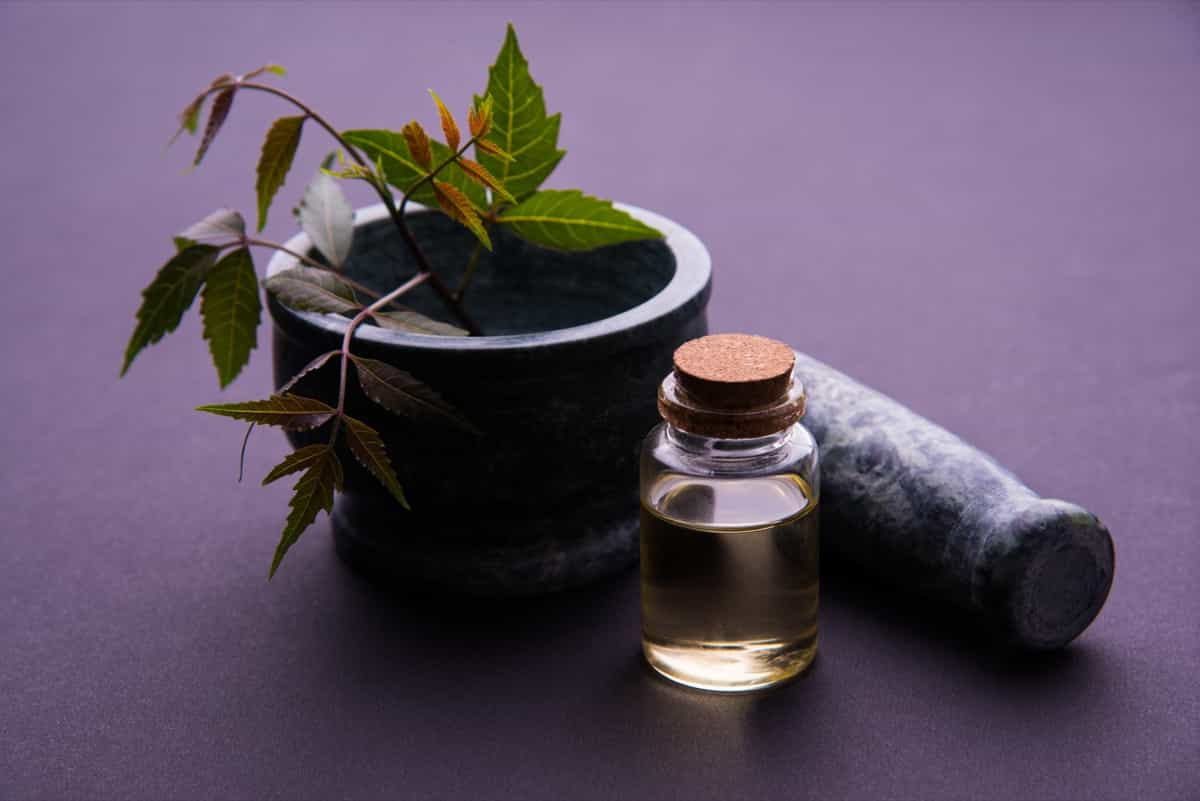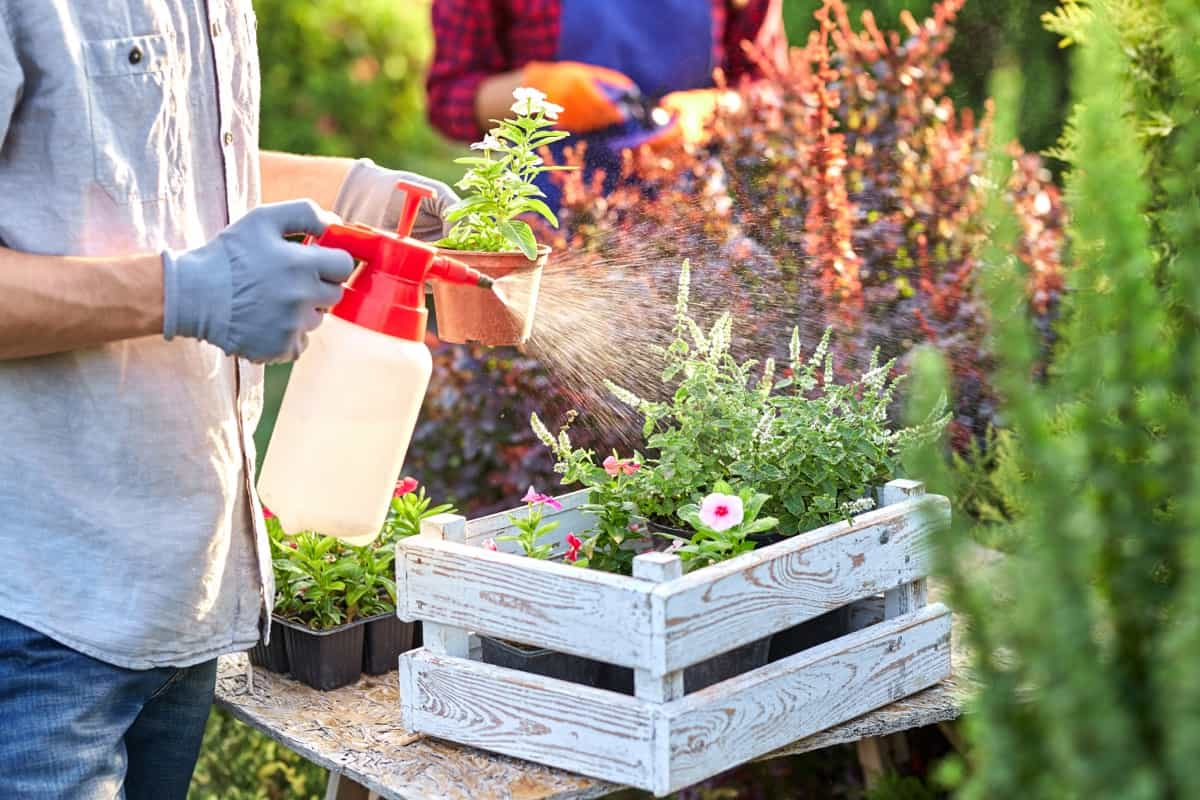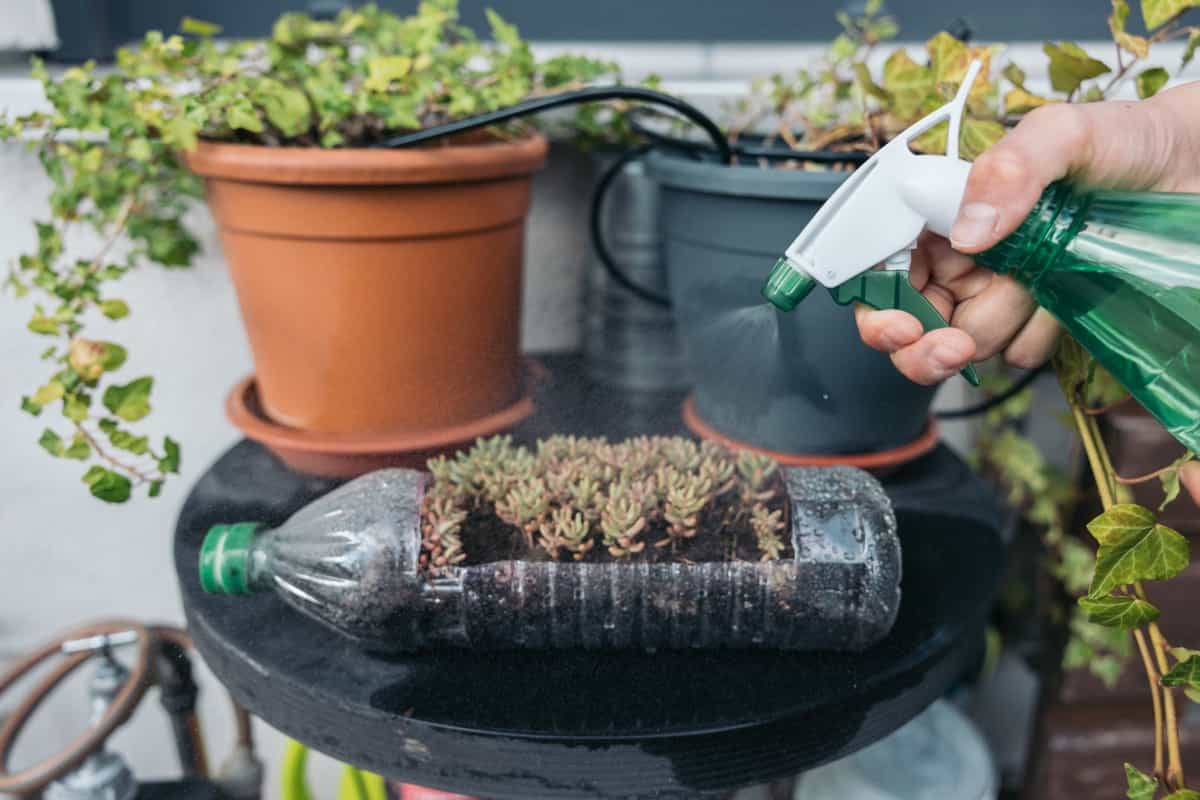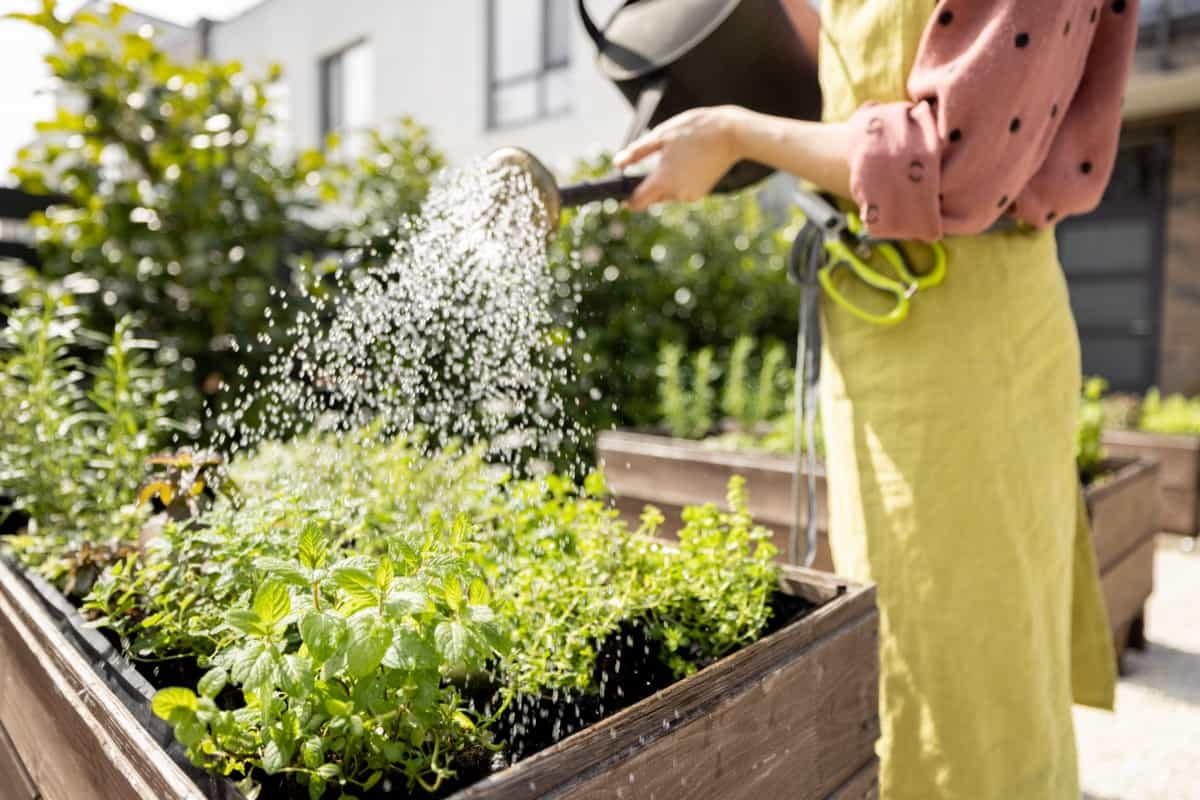Terrace gardens are a unique and innovative way of utilizing limited space to grow plants. Neem oil is a natural solution for keeping your terrace garden free from bugs and pests. This remedy has been used for centuries to combat pests and diseases, making it an essential tool for any terrace garden enthusiast.

How to Use Neem Oil in Terrace Garden
Neem Oil and its Benefits for Terrace Garden
Neem oil is an effective solution for maintaining a healthy terrace garden. The benefits of using neem oil in your garden are numerous and diverse. Neem oil acts as a powerful insecticide, making it an excellent tool to combat pests that can wreak havoc on your plants. Additionally, neem oil has antifungal properties that help prevent plant diseases from affecting your plants.
By applying neem oil to your terrace garden, you can safeguard against these common issues. Moreover, neem oil stimulates the growth of healthy roots and leaves by nourishing the soil with its rich nutrients. This helps improve overall plant health and vitality.
How to Prepare Neem Oil to Use on Terrace Garden
Gather fresh or dried neem leaves from a reliable source. Please make sure they are free from any chemicals or pesticides. Next, crush the leaves and blend them in a food processor until they form a coarse paste. Once you have the neem leaf paste ready, transfer it into a clean container.
Add warm water to the container and stir well to mix the ingredients thoroughly. Allow the mixture to sit overnight, as this will help extract all the beneficial compounds from the neem leaves. The next day, strain the liquid using a fine-mesh sieve to remove any solid particles. The resulting liquid is your homemade neem oil solution, which can be used directly on your terrace garden plants.
In case you missed it: How to Get Rid of Bed Bugs from Furniture Naturally: Home Remedies for Bed Bugs Control

How to Apply Neem Oil on Terrace Garden
Start by ensuring that the weather conditions are suitable for application. Avoid applying neem oil when it’s too hot or during peak sunlight hours. Dilute the neem oil based on the instructions on the label. Fill a spray bottle with the diluted neem oil solution and shake well to ensure proper mixing. Begin spraying the leaves, stems, and branches of your plants, making sure to cover both sides thoroughly. Be careful not to oversaturate your plants with neem oil, as this can cause damage.
Mixing and Dilution for the Right Concentration of Neem Oil for Terrace Garden
To begin, gather your neem oil concentrate and a suitable mixing container. It’s important to follow the instructions on the bottle for proper dilution ratios. Typically, a 1% or 2% dilution is recommended for most plants. Start by adding a small amount of neem oil concentrate into the mixing container. Then, slowly add water while stirring continuously. This helps to emulsify the oil and create an even mixture.
Continue adding water to reach the desired dilution ratio. Remember that more is not always better – using higher concentrations can potentially harm your plants. Once mixed thoroughly, transfer the diluted neem oil solution into a spray bottle or sprayer for easy neem oil application on terrace garden plants. Always perform a test before applying it fully on all your plants to ensure there are no adverse reactions.
Can Neem Oil Be Used on All Terrace Plant Varieties?
Neem oil works by disrupting their life cycle and inhibiting their feeding habits. This means that whether you have flowers, herbs, vegetables, or even fruit trees in your terrace garden, neem oil can help protect them from common pests. It can be used on ornamental flowers such as Roses, Marigolds, and Dahlias, helping to control common pests like aphids, mealybugs, and spider mites.
Vegetable plants like Tomatoes, Peppers, and Cucumbers also benefit from neem oil’s pest-repelling qualities. It helps combat pesky insects like whiteflies, thrips, and caterpillars without harming beneficial pollinators or affecting the taste of your harvest. Fruit trees, such as citrus trees, are another great candidate for neem oil treatment. It helps control fruit-piercing insects like scale insects and citrus leaf miners while promoting overall plant health.
Additionally, certain delicate plants like ferns and succulents may require a lower concentration of neem oil compared to hardier plants like tomatoes or peppers. Adjusting the dilution rate according to the plant’s needs will ensure optimal results without causing harm. While neem oil can generally be used on most terrace garden plant varieties, it’s essential to consider each plant’s sensitivity level before widespread application.
How Long Does Neem Oil Stay Effective on Terrace Garden?
In general, neem oil can remain effective for up to two weeks after application. The severity of pest infestation plays a role in determining how long neem oil remains effective. If your garden has a severe bug problem with extensive damage caused by insects like aphids or mealybugs, you might need to reapply neem oil more frequently.
In case you missed it: How to Control Terrace Garden Pests Naturally: How to Get Rid of Them with Natural and Organic Treatment

Some Common Pests and Diseases That Neem Oil Can Control on Terrace Garden
The common pest that neem oil can help control is aphids. These tiny insects may seem harmless at first, but they quickly multiply, causing them to wilt and die. Neem oil acts as an insect repellent by disrupting their feeding patterns and reproductive cycles. Another troublesome pest that neem oil targets is mealybugs. These small white bugs love to hide in the nooks and crannies of your plants, sucking out their juices and leaving behind a sticky residue.
Neem oil suffocates these pests by coating them with its oily texture. Fungal diseases can also be treated with neem oil. This common plant disease forms a white powdery coating on leaves and stems, inhibiting photosynthesis and stunting growth. Neem oil’s antifungal properties help eliminate this pesky fungus while preventing future outbreaks. In addition to pests and diseases, neem oil also promotes overall plant health by boosting immunity against pathogens.
How to Monitor the Effectiveness of Neem Oil on Terrace Garden
Visual inspection: Regularly observe your plants for any signs of pests or diseases. Look out for chewed leaves, wilting, discoloration, or unusual growth patterns. If these issues persist despite using neem oil, it may indicate that further action is needed.
Pest population: Keep an eye on pest populations in your garden. If you notice a significant decrease in their numbers after applying neem oil, it suggests that the treatment is working effectively.
Disease progression: Monitor the progression of any plant diseases present in your terrace garden. Neem oil can help slow down or prevent the spread of fungal diseases and other diseases. If there is no improvement or if the disease spreads rapidly, additional measures might be required.
Repeat applications: It’s important to follow recommended application guidelines when using neem oil on terrace garden plants. If repeated applications are necessary but fail to provide lasting control over pests or diseases, consider consulting with a gardening expert for alternative solutions.
Safety Precautions to Take When Using Neem Oil on Terrace Garden
- Wear protective clothing: Before applying neem oil, make sure you wear pants, gloves, and goggles to protect yourself from potential irritation.
- Avoid spraying on windy days: Neem oil can easily drift with the wind, so choose a calm day for application to prevent accidental exposure to nearby plants or people.
- Follow dilution instructions: It’s crucial to mix and dilute the neem oil according to the manufacturer’s instructions. Using too much concentrate can harm your plants or even kill them.
In case you missed it: Management of Fungal Diseases in Terrace Gardens: How to Control and Prevent with Natural and Organic Treatment

Frequently Asked Questions (FAQ) on Using Neem Oil in Terrace Garden
Should I Spray Both Sides of The Leaves with Neem Oil?
Absolutely. Bugs don’t discriminate between leaf surfaces, so make sure you cover both sides evenly during application for maximum effectiveness.
Can I Apply Neem Oil While It’s Raining or About to Rain?
It’s best to avoid applying any pest control substances right before or during rainfall since they may get washed away easily and become less effective.
Can I Use Neem Oil on Edible Crops?
Yes. Neem products are commonly used on fruits, vegetables, herbs, and spices without leaving harmful residues behind when applied as directed.
Conclusion
Terrace gardens are a wonderful way to bring greenery into urban spaces. However, they also attract unwanted visitors, such as aphids, mealybugs, and spider mites. These pests can be affected on your plants if left unchecked. This is why Neem Oil is effective. It acts as a powerful insecticide and fungicide, effectively controlling the population of harmful bugs while also preventing the spread of diseases.
- Deworming Schedule for Dogs/Puppies: A Beginners Guide
- How to Prevent and Control Parasites in Goats
- Beneficial Insects in Pest Management
- Natural Solutions for Pest Control in Flower Gardens
- Types of Fungicides Used in Agriculture
- Common Issues in the Fruit Development Stage of Pomegranate Farming
- Fruit Development Issues in Papaya: Easy Solutions and Treatment
- Soil-Borne Diseases and How to Protect Your Plants
- Practices to Prevent Disease Spread in the Garden